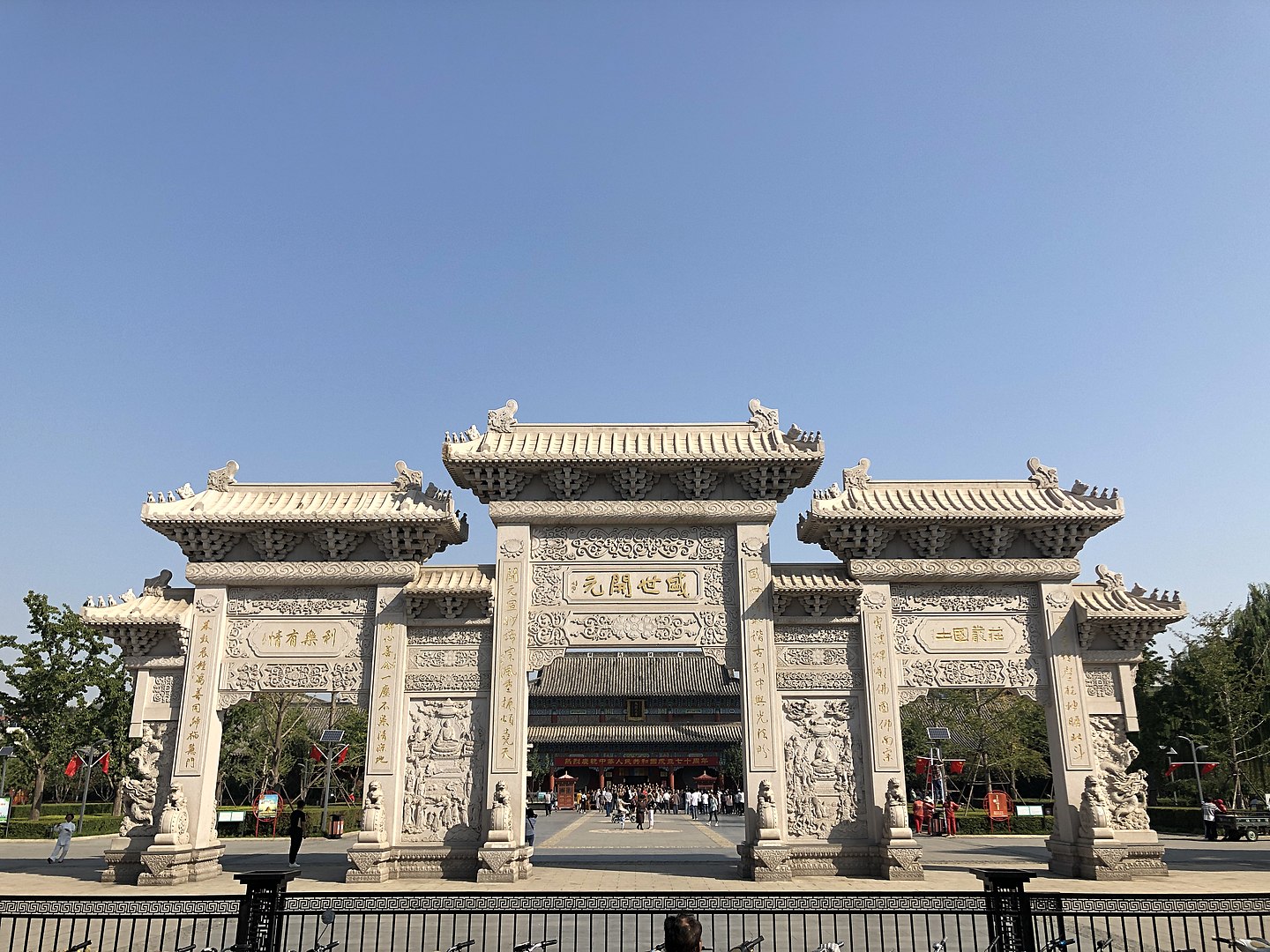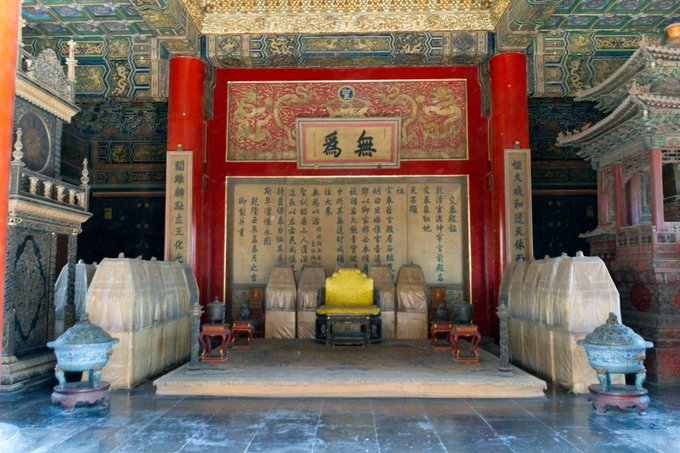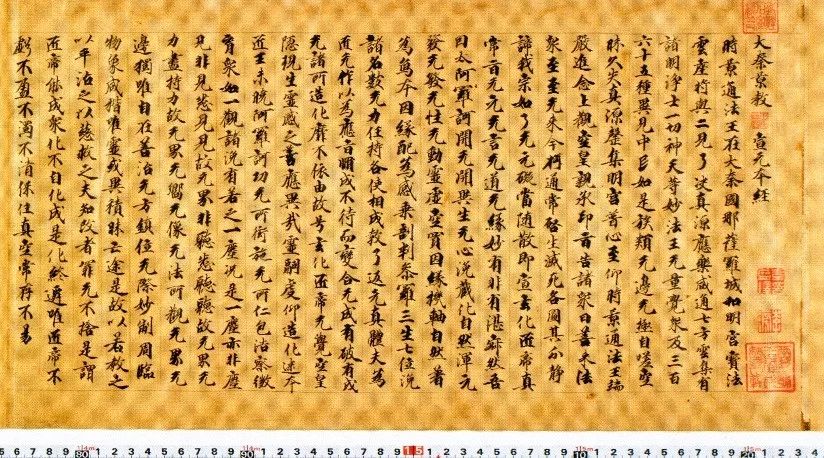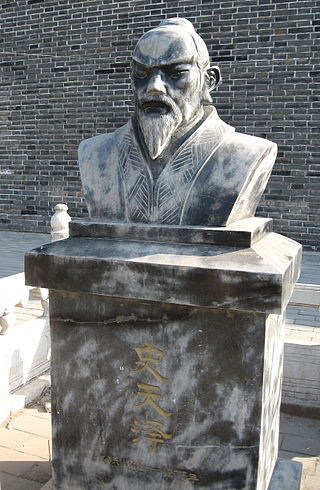Terms used for describing fresh tea leaves (see below links*):
Fresh Leaf Type茶青類:
tip-tea type芽茶類:
all-tip全芽心
one-tip two-leaf一心二葉
leaf-tea type 葉茶類:
terminal facing-leaf* 對口葉
terminal facing three-leaf對口三葉
Note: terminal facing-leaf對口葉 is also called (banjhi leaf) in India.
Black Tea Leaf Grading (only used for black tea, in India and nearby.) (see below links*):
Flowery Orange Pekoe 花橙白毫
Orange Pekoe 橙白毫
Pekoe 白毫
Souchong 小種
Pekoe Souchong 白毫小種
Congou 工夫
Bohea 武夷
Fresh Tea Leaf Classification (for all teas, not just black tea.) (see links*):
Tip 芽
First Leaf 第一葉
Second Leaf 第二葉
Third Leaf 第三葉
Fourth Leaf 第四葉
Fifth Leaf 第五葉
Sixth Leaf 第六葉
*Figures and links for figures and explanation:
Pioneering English Translation of Chinese Tea Studies Terminology首創如此英譯的中文茶學術語
5th Lu-Yu Tea Studies Deliberation of Papers Published Journal Conference, Steven R. Jones,
(published by Lu-Yu Tea Culture Institute)2010.04ISBN 978-986-84204-1-0
《中英文茶學術語》( 陸羽茶藝股份有限公司 , 2010, ISBN 978-957-9690-06-5 )
Primary Processing初製:
tea plant 茶樹
tea harvesting 采青
two leaf 兩葉
fresh leaves 茶青
withering 萎凋
sun withering 日光萎凋
indoor withering 室內萎凋
laying 作青(includes setting and tossing)
setting 靜置
tossing 攪拌浪青
enzymatic oxidation酶促氧化
fermentation 發酵
oxidation 氧化
fixation 殺青
steaming 蒸青
stir fixation 炒青
hot air fixation 烘青
sun fixation 曬青
rolling 揉捻
light rolling 輕揉
heavy rolling 重揉
cloth rolling 布揉
drying 乾燥
pan firing 炒乾
hot air drying 烘乾
sun drying 曬乾
sweltering悶黃
piling 渥堆
refining 精製
screening 篩分
cutting 剪切
de-stemming 拔梗
shaping 整形
winnowing 風選
blending 拼配
compressing 緊壓
re-drying覆火
aging 陳放 (by storing)
added processing 加工
roasting 焙火
scenting 熏花
spicing調味
tea beverage 飲料茶
packaging包裝
vacuum packaging真空包裝
nitrogen packaging 充氮包裝
shredded-tea bag 碎形小袋茶
whole-leave tea bag 原片小袋茶
Classification分類:
The four classifications of tea according to fermentation再把這四大分類細分:
According to the degree of: fermentation, rolling, baking and tea leaf maturity根據製造時發酵,揉捻焙火與採摘時原料成熟度來分類
non-fermented tea :不發酵茶,即綠茶:
post–fermented後發酵茶 即普洱茶,即黑茶:
partially fermented tea 部分發酵茶,半發酵茶,即烏龍茶
completely fermented tea全發酵茶,即紅茶 :
In this table below we have the tea leaves types and the relationship to the kind of tea with the fermentation levels.
| Tip or Leaf Type*分成而與或葉茶類芽茶類 | Classification of Tea
茶之分類 |
Degree of Fermentation
發酵程度 |
| leaf-tea type
葉茶類 |
oolong tea
烏龍茶 |
partial fermentation
部分發酵(半發酵茶) |
| tip-tea type
芽茶類 |
white tea
白茶 |
partial fermentation
部分發酵 (半發酵茶) |
| tip-tea type
芽茶類 |
green tea , yellow tea
綠茶、黃茶 |
no fermentation
不發酵 |
| tip-tea type
芽茶類 |
black tea
紅茶 |
complete fermentation
全發酵 |
| tip-tea type
芽茶類 |
Puer tea, dark tea
普洱茶 、 黑茶 |
post-fermentation
後發酵 |
*Exceptions: White Tip Oolong is a “ 芽茶類 tip-tea type” and Liuan Leaf green tea is a “ 葉茶類 leaf-tea type”, also some of the “ 芽茶類 tip-tea type” teas are actually “全芽心 all-tip”.
Green Tea Types綠茶分為:
steamed green tea蒸青綠茶
powered green tea 粉末綠茶
silver needle green tea 銀針綠茶
lightly rubbed green tea 原形綠茶
curled green tea 松卷綠茶
sword shaped green tea劍片綠茶
twisted green tea 條形綠茶
pearled green tea 圓珠綠茶
Puer Tea Types普洱茶分為 :
Age-puer 陳放普洱
pile-fermented puer渥堆普洱
Oolong Tea Types烏龍茶分為:
white oolong:白茶烏龍
twisted oolong:條形烏龍
pelleted oolong 球形烏龍
roasted oolong熟火烏龍
white tipped oolong:白毫烏龍
Black Tea Types紅茶分為:
unshredded black tea:功夫紅茶
shredded black tea:碎形紅茶
Scented Tea Types熏花茶可分為:
Any type of tea can be scented.
任何種類的茶都可以熏花。
scented green tea 熏花綠茶
scented puer tea熏花普洱
scented oolong tea 熏花烏龍
scented black tea熏花紅茶
jasmine scented green tea熏花茉莉
Spiced Tea Types調味茶分為:
Any type of tea can be spiced.
任何種類的茶都可加以調味。
spiced green tea 調味綠茶
spiced Puer tea調味普洱
spiced oolong tea調味烏龍
spiced black tea調味紅茶
There are different ways to classify tea, such as the degree of withering or fermentation, type of fresh tea leaf like tips and/or leaves, general color of finished tea leaf, like black tea or green tea. The following is degree of fermentation based.
Explanation of some tea making processes:
Chinese six major tea types中國六大基本茶類: green, yellow, white, oolong, black, and dark tea.
Any type of tea can be spiced.任何種類的茶都可加以調味。
Spiced Tea 調味茶
Any type of tea can be scented任何種類的茶都可以熏花。.
Scented Tea 熏花茶
oxidation氧化 (enzymatic): a natural chemical change in the tea leaf that begins after harvesting and accelerates if leaf cells are broken and exposed to oxygen.
withering萎凋: water loss by respiration and evaporation and leaf becomes more pliable, dryness and heat aid in this process.
fermentation發酵: actually enzymatic oxidation, noticeable change chemical composition and leaf becomes darker, moisture and heat aid in this process.
fixation殺青: to rapidly stop the fermentation through water loss caused by heat.
rolling揉捻: breaking the leaf cell walls exposing sap to leaf substrate and air, and shaping.
drying乾燥: making the leaves ready for storage.
laying 作青: includes setting and tossing, this step is during the withering/fermentation stage
setting 靜置: letting the fresh leaves rest
tossing 攪拌浪青: also called shaking (but this is not rolling)
Two different methods of making black tea (in India, Sri Lanka for example):
There are two methods used to rupture the leaf cells prior to fermentation.
orthodox method: the traditional way of making black tea, a batch of leaves go through the roller and are macerated and twisted.
CTC(crush-tear-cut) 切碎-撕裂-捲曲method: leaves are continuously fed through the machine and are rolled and goes through sharp teeth.
切碎-撕裂-捲曲 crush-tear-curl CTC
Using tea jargon fermentation/oxidation, microbe fermentation is called piling, and oxidation is called fermentation.
Key processing factors influencing the variety of tea and developing different tea character:
Green Puer: large leaf variety, can be aged but it still is green Puer, the thing that makes a Puer is it has to be sun fixed, the aging is an added process, yes it should be aged but it does not have to be it is still a Green Puer at this point, can be compress into cakes, comes from Puer, China. Regular green tea doesn’t have sun fixation.
Dark tea: sun fixation, piling process, small leaf variety processing similar to dark Puer, also usually aged.
Dark Puer: sun fixation, piling process, large leaf variety, comes from Puer, China.
White tea: lightly oxidation, but white tea is not high heat fixated it is withered then rolled lightly then dried, many come from in Fuding, China.
Oolong tea: the degree of laying作青 and fermentation affects the tea character developed, many oolongs are made with indoor withering an example cool long time withering like anshi iron goddess.
Green tea: fixation is usually pan fixation in China and Taiwan and steam fixation in Japan.
Yellow tea: similar to green tea but has a added swealtering process no added heat the tea is piled up after fixation and rolling for short-time only made in the spring.
Black tea: (key point for all black teas is first rolled/ctc/rupture cell walls then fermentation)
Roasting is an added process/加工, literally any tea can be roasted but it will not change tea type: for example if a green tea is roasted it still is a green tea like the japanese tea (Hojicha/ほうじ茶/番茶). oolongs can be roasted but not necessary, same is for scenting and spicing. see below.
Problems of translating: Taiwan and many parts of China use 初製and 加工:
added processing 加工: re-drying覆火, aging 陳放 (by storing), roasting 焙火, scenting熏花, spicing調味Added after the tea is one of the main varieties and can’t be changed, for example once it is a green tea it won’t change into a black tea.
Primary processing creates the major tea types, green tea, green puer, dark puer, oolong tea, white tea, dark tea, black tea:
Primary Processing初製from fresh leaves 茶青not all are used: withering萎凋, fermentation發酵, fixation殺青,rolling揉捻,drying乾燥, 渥堆 piling, this is the process that make a tea black or white or other variety.
Main tea processing steps to create different types of tea:
The only ingredient for primary processing is “fresh leaves(tea) 茶青”. Any other ingredients are used during the added processing of scenting and spicing
fresh leaves 茶青: fixation殺青 > rolling揉捻 > drying乾燥 : green tea綠茶
fresh leaves 茶青: fixation殺青 > rolling揉捻 > sweltering悶黃 > drying乾燥 :yellow tea黃茶
fresh leaves 茶青: sun fixation曬青 > rolling揉捻 > sun drying曬乾> (usually aged) : green Puer青普
fresh leaves 茶青: sun fixation曬青 > rolling揉捻 > piling 渥堆 > sun drying曬乾 : dark tea黑茶and dark Puer熟普
fresh leaves 茶青: withering (fermentation) 萎凋 > rolling揉捻 > drying乾燥 : white tea白茶
fresh leaves 茶青: withering萎凋 > fermentation發酵 > fixation殺青 > rolling揉捻> drying乾燥:oolong tea烏龍茶
fresh leaves 茶青: withering萎凋 > rolling揉捻 > fermentation發酵 > drying乾燥 : black tea紅茶
*to be called Puer tea it must go through sun fixation曬青 and sun drying曬乾 .
*black tea rolling can be twisting, orthodox or CTC
non fermentation:
tea harvesting- fixation -rolling-shaping- drying
partial fermentation:
tea harvesting -withering (indoors and outdoors)- fermentation- fixing – rolling-
drying-(optional roasting)
full fermentation:
tea harvest- withering -rolling (twisting, orthodox, CTC)- fermentation- drying
post fermentation:
piled> tea harvesting- sun fixation -sun drying- rolling – piling- compress(shaping or loose)- sun drying -(can age)
aged> tea harvesting- fixation – rolling – compressing –sun drying
This is the flow chart of the primary tea processing of what determines green tea, yellow tea, oolong tea, tea white, tea black, dark tea, green Puer, and dark Puer. This does not include any additional processes such as roasting, scenting and flavoring; since these can be done to any tea:
Added processing 加工: re-drying覆火, aging 陳放 (by storing), roasting 焙火, scenting熏花, spicing調味Added after the tea is one of the main varieties and can’t be changed, for example once it is a green tea it won’t change into a black tea.
Possible Added Processes
green tea綠茶 : roasting 焙火; scenting熏花; spicing調味
yellow tea黃茶: scenting熏花; spicing調味
green Puer青普: aging 陳放; spicing調味
dark tea黑茶and dark Puer熟普: aging 陳放 ; spicing調味
white tea白茶: scenting熏花; spicing調味
oolong tea烏龍茶: re-drying覆火; aging 陳放; roasting 焙火; scenting熏花; spicing調味
black tea紅茶: aging 陳放; scenting熏花; spicing調味
Names of Tea常見茶名:
Green Blade 煎茶
Yellow Mountain Fuzz Tip 黃山毛峰
Dragon Well 龍井
Green Spiral 碧螺春
Gunpower Tea 珠茶
Jasmine Tea 茉莉花茶
Rose Bulb 玫瑰繡球
Liuan Leaf 六安瓜片
Tea Powder 茶粉
Fine Powder Tea 抹茶 (matcha)
Jun Mountain Silver Needle 君山銀針
White tip silver needle 銀針白毫
White peony 白牡丹
Long Brow 壽眉
Brow Tea 眉茶
Jade Dew 玉露
White Tip Oolong 白毫烏龍
Wuyi Rock 武夷岩茶
Red Robe tea 大紅袍
White Comb白鷄冠
Gold Turtle水金龜
Iron Monk鐵羅漢
Cassia tea 肉桂 (武夷)
Narcissus 水仙
Finger Citron 佛手
Iron Goddess (TGY) 鐵觀音
Osmanthus Oolong桂花烏龍
Roast Oolong 熟火烏龍
Light Oolong 清茶
Pouchong Tea 包種茶
Dongding Oolong 凍頂
Anji White Leaf 安吉白茶
Fenghuang Unique Bush 鳳凰單從
Ginseng Oolong 人參烏龍茶
Cinnamon Tea肉桂茶
Gongfu Black 工夫紅茶
Smoke Black 煙熏紅茶
Dark Tea黑茶
Age Bowl Puer 青沱
Age Cake Puer青餅
Pile Cake Puer 熟餅
Tea Ware 茶具:
tea cart 茶車
water heater煮水器
water kettle 水壺
tea basin 水盂
tea caddy (canister) 茶罐
tea boat 茶船
teapot 茶壺
cover bowl 蓋碗
tea pad 壺墊
tea pitcher茶盅
lid saucer蓋置
towel tray茶巾盤
tea towel 茶巾
tea holder茶荷
tea brush 茶拂
timer 定時器
tea spoon 茶匙
serving tray奉茶盤
teacup 茶杯
cup saucer杯托
seat cushion座墊
cup cover 杯套
packing wrap包壺巾
tea ware bag 茶具袋
ground pad 地衣
strainer cup 同心杯
personal tea set 個人品茗組(茶具)
brewing vessel 沖泡盅
tea ware 茶器
thermos 熱水瓶
tea urn / jar 茶甕
tea table 茶桌
side table側櫃
tea bowl 茶碗
spout bowl 有流茶碗
heating base煮水器底坐
Tea Brewing 泡茶:
The Three Ts 泡茶三要素
3-Ts = tea, temperature, and time
tea amount 茶量
water temperature 水溫
steeping time 浸泡時間
| The Three Ts 泡茶三要素 | |
| tea amount | 茶量 |
| water temperature | 水温 |
| steeping time | 浸泡時間 |
Difference of “gong工” and “kung功”
Kungfu 功夫 (use this one for martial arts武術)
Gongfu 工夫 (use this one tea terminology茶術語)
Gongfu Tea Ceremony 工夫茶
Lu-Yu Small Pot Tea Laws: (24 Rules) 陸羽小壺茶法24則:
- prepare tea ware備具
- from still to ready position從靜態到動態
- prepare water備水
- warm pot溫壺
- prepare tea備茶
- recognize tea識茶
- appreciate tea賞茶
- warm pitcher溫盅
- put in tea置茶
- smell fragrance聞香
- first infusion沖第一道茶
- timing計時
- warm cups 燙杯
- pour tea 倒茶
- prepare cups 備杯
- divide tea 分茶
- serve tea by cups 端杯奉茶
- second infusion 沖第二道茶
- serve tea by pitcher 持盅奉茶
19a. supply snacks or water (not necessary) 茶食供應或品泉
- take out brewed leaves 去渣
20a. appreciate leaves (not necessary) 賞葉底
- rinse pot 涮壺
- return to seat 歸位
- rinse pitcher 清盅
- collect cups收杯
— conclude 結束
History歷史:
Lu Yu 陸羽 (Tang Dynasty唐代)
“Tea Classic” 《茶經》
Three Scrolls Ten Chapters三卷十章
Tea Classic’s ten chapters茶經的10章
The “Tea Classic” is made of “Three Scrolls Ten Chapters三卷十章”, each chapter is briefly explained below:
One: Origin一之源
This chapter explains origin legends of tea in China. It also contains a horticultural description of the tea plant and its proper planting as well as some etymological speculation.
Two: Tools二之具
This chapter describes fifteen tools for picking, steaming, pressing, drying and storage of tea leaves and cake.
Three: Making三之造
This chapter details the recommended procedures for the production of tea cake.
Four: Utensils四之器
This chapter describes twenty eight items used in the brewing and drinking of tea.
Five: Boiling五之煮
This chapter enumerates the guidelines for the proper preparation of tea.
Six: Drinking六之飲
This chapter describes the various properties of tea, the history of tea drinking and the various types of tea known in 5th century China.
Seven: History七之事
This chapter gives various anecdotes about the history of tea in Chinese records, from Shennong through the Tang dynasty.
Eight: Growing Regions八之出
This chapter ranks the eight tea producing regions in China.
Nine: Simplify九之略
This chapter lists those procedures that may be omitted and under what circumstances.
Ten: Pictorialize十之圖
This chapter consists of four silk scrolls that provide an abbreviated version of the previous nine chapters.
Lu Yu’s Tea Ware陸羽的茶具:
crushing block 砧椎
brazier 風爐
charcoal basket 炭筥
charcoal mallet 炭檛
fire chopsticks火筴
cauldron 鍑
cauldron stand 交床
tea tongs 夾
paper wallet 紙囊
crushing roller 碾
sieve box 羅合
tea holder 則
water vessel 水方
water filter bag 漉水囊
gourd scooper 瓢
bamboo tongs 竹夾
salt container 鹺簋
boiled water vessel 熟盂
bowl 碗
bowl basket 畚
brush 劄
water basin 滌方
spent tea basin 滓方
tea cloth 巾
utensil table 具列
utensil basket都籃
Old Man Shenan 審安老人 (Shen’an) (Song Dynasty宋代)
“Tea Ware Drawings and Praises” 《茶具圖贊》
Some of the tea wares of Shenan and Lu Yu, have the same Chinese names, because some of the tea wares from tang dynasty were also used in the song dynasty, although Shenan does give them special names, these special names follow pinyin spelling without tones.
Old Man Shenan’s 12 Tea Ware審安老人的12茶具:
brazier 風爐 (hong lu韋鴻臚)
crushing block砧椎 (mu dai zhi木待制)
crushing roller碾 (jin fa cao金法曹)
stone mill*石磨 (shi zhuan yun石轉運 )
gourd scooper瓢 (hu yuan wai胡員外)
sieve box羅合 (luo shu mi羅樞密)
brush札 (zong cong shi宗從事)
bowl basket畚 (qi diao mi ge漆雕秘閣)
bowl碗 (tao bao wen陶寶文)
water vessel水方 (tang ti dian湯提點)
tea whisk*茶筅 (zhu fu shi竺副師)
tea cloth巾 (si zhi fang司職方)
*Note: The above tea wares were also mentioned by Lu Yu except for (stone mill石磨) and (tea whisk茶筅).
Emperor Song Huizong 宋徽宗(Song Dynasty宋代)
“Da Guan Tea Treaties” 《大觀茶論》
“Literary Gathering” 《文會圖》
Zhu Yuanzhang朱元璋 (明. 1328~1398) (Ming. 1328-1398)
First Ming Dynasty emperor, when he became emperor, to combat corruption in the tea trade, ordered the production stop of the compressed tribute tea貢茶 1391 AD. It was decreed that tea take a simpler and also a less currency-ready form. The coming of loose leaf tea was a vital development for the further innovation in tea arts and culture. His 17th son was “Zhu Quan朱权” that wrote the “Tea Manual茶谱”.
“Tea Manual, 1440” Zhu Quan (Ming. 1378-1448) Imperial Prince
《茶譜》朱權 (明. 1378~1448)
Total of 16 chapters, content below also includes ten tea wares:
Preface序
Selecting Tea品茶
Storing Tea收茶
Whisking Tea點茶
Scenting Tea Method熏香茶法
Tea Ware 器具
Tea Brazier茶爐
Tea Stove茶竈
Tea Mill茶磨
Crushing Roller茶碾
Tea Sieve茶羅
Tea Stand茶架
Tea Spoon茶匙
Tea Whisk茶筅
Tea Cup茶甌
Tea Pitcher茶瓶
Heating Water Method煎湯法
Classifying Water品水
Tao Gu 陶穀
“Record on Plantation Tea”《苑茗錄》
Cai Xiang 蔡襄
“Record on Tea”《茶錄》
The three popular methods for drinking tea:
boiling tea 煮茶 (Tang Dynasty唐代)
whisking tea 點茶 (Song Dynasty宋代)
brewing tea 泡茶 (Ming Dynasty明代)
Sen no Rikyu (千利休, 1522 – April 21, 1591)
Sen no Rikyu seven rules for the tea ceremony as follows:
- Make a pleasing bowl of tea
- Lay the charcoal so that the water boils efficiently
- Provide a sense of coolness in the summer and warmth in the winter
- Arrange the flowers as though they were in the field
- Be ready ahead of time
- Be prepared in case it should rain
- Act with utmost consideration toward your guests
( 利休七則:茶は服のよきように点て,炭は汤の沸くように置き,花は野にあるように,夏は凉しく冬は暖かに, 刻限は早めに,降らずとも雨の用意,相客に心せよ。)
傳稱由利休創立的茶道的七條法則如下:
(利休七則: 茶要泡得好,火要能沸水,花似野外生,夏涼而冬暖,準備要提前,雨具要備妥,對陪客貼心。)
Southern Record《南方錄Nanboroku》 Sen no Rikyu
First Scroll: Memorandum 卷一覚書(jap. Oboegaki)
Second Scroll: Gatherings卷二會(jap. , Kai)
Third Scroll: Shelves卷三 棚 (jap. , Tana)
Fourth Scroll: Academy卷四書院(jap. Shoin)
Fifth Scroll: Layout卷五 台子 (jap. Daisu)
Sixth Scroll: Abridgment卷六墨引(jap. Sumihiki)
Seventh Scroll: Memoirs卷七滅後(jap. Metsugo)
This book is considered the most important book by Rikyu on tea. Consisting of: Memorandum, Gatherings, Shelves, Schools, Tables, Citations, and Memoirs. Some say there are two more chapters, together to be a total of nine chapters. Details of the book’s total chapters are not conclusive.
該書被視為了解利休居士的茶的最重要的秘傳書。由名為“覺書”、“會”、“棚”、“書院”、“台子”、“墨引”、“滅後”7卷構成。也有人將“秘傳”、“追加”合在一起稱,共為9卷。關於成書的詳細情況的研究,尚沒有定論。
Principles of Japanese Tea Ceremony
和 Wa: Harmony – with nature as a whole
敬 Kei: Respect – for each other
清Sei: Purity- of utensils and mind
寂 Jaku: Tranquility – with nature and mind
Wabi Sabi
Wabi: cultivation of simplicity, quietude, and absence of ornament
Sabi: celebration of old, faded, and imperfect
1。抹茶與和果子的基本知識,參加茶會的準備
2。茶室禮儀
3。利休七則
4。茶道四規“和敬清寂”
5。立禮
6。利休道歌
7。座禮
8。一期一會(ichi-go ichi-e) one time, one meeting; once in a lifetime
Items of Cha-no-yu
釜 kettle
風炉(コンロ) brazier
敷板 board for the brazier
茶碗 teabowl
棗 container for powdered thin tea
茶杓 teascoop
柄杓 ladle
蓋置(竹) lid rest (bamboo)
茶筅 tea whisk
茶巾 linen cloth
帛紗(白地) silk cloth (white)
懐紙 packet of paper
畳(正方形) mat
屏風(大) screen (tall)
屏風(小) screen (short)
毛氈 carpet
畳カバー cover for mat
茶筅の癖直し fixing for teascoop
水指 fresh-water container
建水 waste-water receptacle
香合 incense container
茶巾 linen cloth
古帛紗 square of classic-patterned fabric
懐紙 packet of paper
道具箱 utensils box
Incense Terminology:
Incense Arts香道 , Kodo
Agarwood 沈香from heartwood from Aquilaria trees, unique, the incense wood most used in incense ceremony, other names are: lignum aloes or aloeswood, gaharu, jinko, or oud
Censer香爐usually small, and used for heating incense not burning
Censer and incense burner, the terms are sometimes interchangeable
Charcoal木炭 only the odorless kind is used
Incense burner香爐usually larger than a censer, and used for burning incense
Incense woods香木a naturally fragrant resinous wood
Leaf-tea type葉茶類tea consisting of the leaves, no tips
Musical terminology borrowed and related to scent:
Sharp notes高頻the first and most volatile scents, quick to dissipate
Round notes中頻the main body scents, dissipating in the middle
Deep notes低頻the finishing scents, lingering and slowest to dissipate
Note: the above musical terms are also used similarly in the perfume industry
Odor – more pleasantly known as, “fragrance, aroma, or scent香”
Olfactory glands嗅腺the glands that are responsible for the sense of smell
Tea incense茶香dry-leaf, pure brew-able and drinkable tea used as incense
Tip-tea type芽茶類tea consisting the young unfurled tips and leaves
香十徳
- 感格鬼神 感は鬼神に格(いた)る – 感覚が鬼や神のように研ぎ澄まされる
- 清淨心身 心身を清浄にす – 心身を清く浄化する
- 能除汚穢 よく汚穢(おわい)を除く – 穢(けが)れをとりのぞく
- 能覺睡眠 よく睡眠を覚ます – 眠気を覚ます
- 静中成友 静中に友と成る – 孤独感を拭う
- 塵裏偸閑 塵裏に閑(ひま)をぬすむ – 忙しいときも和ませる
- 多而不厭 多くして厭(いと)わず – 多くあっても邪魔にならない
- 寡而為足 少なくて足れりと為す – 少なくても十分香りを放つ
- 久蔵不朽 久しく蔵(たくわ)えて朽ちず – 長い間保存しても朽ちない
- 常用無障 常に用いて障(さわり)無し – 常用しても無害
The Ten Virtues of Incense
It brings communication with the transcendent
It refreshes mind and body
It removes impurity
It brings alertness
It is a companion in solitude
In the midst of busy affairs, it brings a moment of peace
When it is plentiful, one never tires of it
When there is little, still one is satisfied
Age does not change its efficacy
Used everyday, it does no harm
Reference出版著作:
*Comprehensive Introduction to Tea Studies (including Chinese-English Tea Terminology); Proceedings of the 13th International Wu-Wo Tea Ceremony and Tea Culture Festival; Pub.: Ten Ren Tea Arts and Culture Foundation; Date: 2011.05; ISBN: 978-986-84204-2-7
◎綜合研論茶學 (中英文茶之術語) ,第十三屆國際無我茶會 , 暨 國際茶文化節 , 論文集
天仁茶藝文化基金會, 2011.05, ISBN: 978-986-84204-2-7
*“Chinese-English Tea Studies Terminology”, (2010), Lu-Yu Tea Culture Institute, Co., Ltd., ISBN 978-957-9690-06-5
◎《中英文茶學術語》( 陸羽茶藝股份有限公司 , 2010, ISBN 978-957-9690-06-5 )
* Pioneering English Translation of Chinese Tea Studies Terminology首創如此英譯的中文茶學術語;
5th Lu-Yu Tea Studies Deliberation of Papers Published Journal Conference 李瑞河(published by Lu-Yu Tea Culture Institute) 2010.04 ISBN 978-986-84204-1-0
*“Chinese-English Tea Studies Terminology”, (2009),Tenfu Tea College, Ctrl No: zyk0030030
◎《中英文”茶學術語”》( 天福茶學院,2009,控制號:zyk0030030 )
*“Specialized English for Tea”, (2008),Tenfu Tea College,Ctrl No: zyk0014462
◎《茶文化系專業英語》( 天福茶學院,2008,控制號:zyk0014462)
来源:http://teaarts.blogspot.com/2010/06/tea-terms-2010.html











